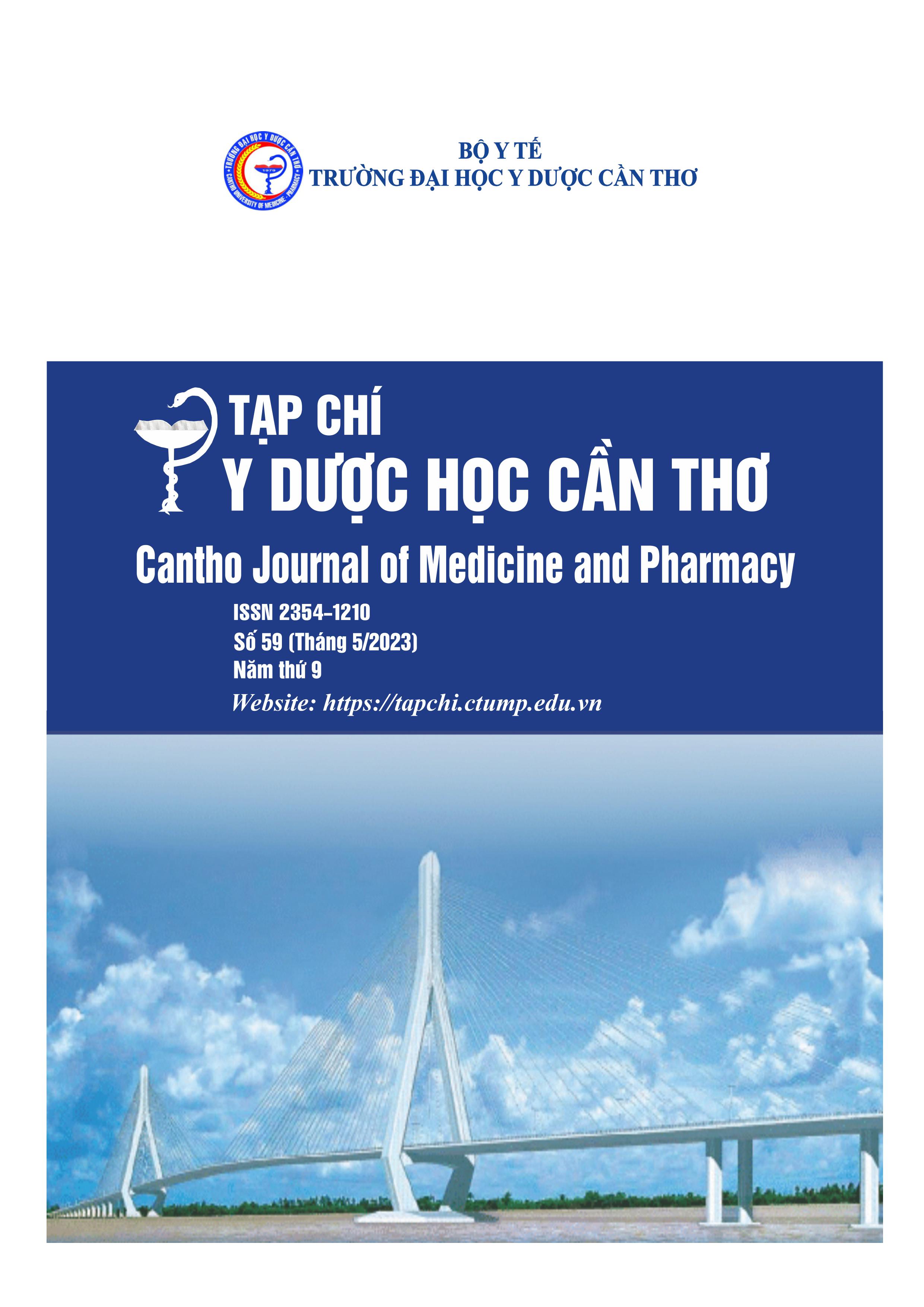CLINICAL, PARACLINICAL FEATURES, TREATMENT RESULTS OF PATIENTS UNDER 40 YEARS OF AGE WITH ACUTE MYOCARDIAL INFARCTION
Main Article Content
Abstract
Background: Acute myocardial infarction usually occurs in middle-aged and older people. However, there is an increase in incidence of acute myocardial infarction in younger adults, especially in patients aged ≤ 40. Objectives: To study clinical features and coronary artery lesions and treatment of adults under 40 years of age with acute myocardial infarction. Materials and methods: A cross-sectional study was conducted on 90 patients with myocardial infarction who underwent coronary angiography at Can Tho Central General Hospital in 2020-2022 and they were divided into 2 groups: ≤ 40 and > 40 years old. Chest pain characteristics, vital signs, risk factor profile, laboratory test results, electrocardiographic and echocardiographic findings, coronary angiographic findings were assessed. Treatment results were evaluated using clinical and imaging. Results: Among 90 patients, 43 (47.8%) were ≤ 40 years of age. The mean patient age in this group was 35.7 ± 4.5 years and men made up 100% of the study sample. When compared with their older counterparts, patients aged ≤ 40 had less hypertension (41.9% vs 80.9%) and less diabetes (9.3% vs 31.9%). The most common presentation was ST segment elevation myocardial infarction (67.4%). The single-vessel disease was identified in 83.7% of patients. The most common location of coronary lesions was the left anterior descending artery (69.8%). The success rate of the procedure was
94.1% and the clinical success rate was 91.2%. Conclusions: Most of patients ≤ 40 years old with acute myocardial infarction are male with classical risk factors. Single vessel disease and ST segment elevation myocardial infarction presentation are predominant in young patients. primary coronary intervention gives good results.
Article Details
Keywords
myocardial infarction, risk factors, coronary lesion, primary coronary intervention
References
2. Choudhury L. and Marsh J. D. Myocardial infarction in young patients. Am. J. Med. 1999. 107(3), 254-261.
3. Huỳnh Văn Minh, Hồ Anh Bình, Đinh Thế Anh. Nghiên cứu một số yếu tố nguy cơ, đặc điểm lâm sàng, cận lâm sàng, tổn thương mạch vành ở bệnh nhân hội chứng vành cấp dưới 40 tuổi, Tạp chí Nội tiết và Đái tháo đường. 2022. (51), 86-93, https://doi.org/10.47122/vjde.2022.51.12.
4. Tewari S., et al. Premature coronary artery disease in North India: An angiography study of 1971 patients. Indian Heart J. . 2005. 57(4), 311-318.
5. Fennich H., et al. Acute myocardial infarction among young adults under 40 years of age: Risk factors, clinical and angiographic characteristics. Cor et Vasa. 2019. 61(6), 578-583, doi: 10.33678/cor.2019.052.
6. Maroszyńska-Dmoch E. M. and Wożakowska-Kapłon B. Clinical and angiographic characteristics of coronary artery disease in young adults: A single centre study. Kardiol. Pol.. 2016. 74(4), pp. 314-321.
7. Yang J., et al. Risk factors and outcomes of very young adults who experience myocardial infarction - The partners YOUNG-MI registry. Am. J. Med..2020. 133(5), 605-612, doi: 10.1016/j.amjmed.2019.10.020.
8. Trương Minh Châu, Châu Ngọc Hoa. Đặc điểm hội chứng vành cấp ở bệnh nhân trẻ. Y Học TP. Hồ Chí Minh. 2015. 19(1), 12-18.
9. Muhammad A. S., et al. Comparative assessment of clinical profile and outcomes after primary percutaneous coronary intervention in young patients with single vs multivessel disease. World J. Cardiol..2020. 12(4), 136-143, doi: 10.4330/wjc.v12.i4.136.
10. Tsai W. C., et al. Clinical characteristics of patients less than forty years old with coronary artery disease in Taiwan: A cross-sectional study. Acta Cardiol. Sin.. 2017. 33(3), 233-240, doi: 10.6515/ACS20161026A.
11. Tini G., et al. Long-term outcome of acute coronary syndromes in young patients. High Blood Press. Cardiovasc. Prev.. 2017. 24(1), 77-84, doi: 10.1007/s40292-017-0183-6.
12. Huỳnh Trung Cang. Kết quả 2 năm can thiệp động mạch vành qua da tại Bệnh viện Đa khoa Kiên Giang. Tạp chí Tim mạch học Việt Nam. 2014. 68, 161-169.


